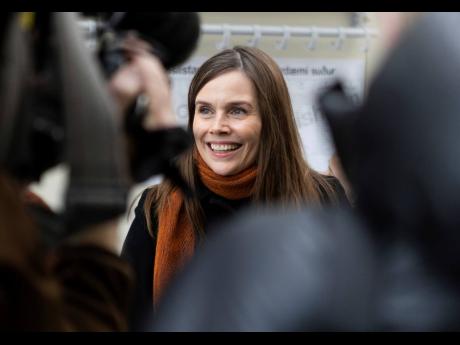So close! Iceland almost gets female-majority parliament
REYKJAVIK (AP):
Iceland briefly celebrated electing a female-majority parliament Sunday before a recount produced a result just short of that landmark for gender parity in the North Atlantic island nation.
The initial vote count had female candidates winning 33 seats in Iceland’s 63-seat parliament, the Althing, in an election that saw centrist parties make the biggest gains.
Hours later, a recount in western Iceland changed the outcome, leaving female candidates with 30 seats, a tally previously reached at Iceland’s second most recent election, in 2016. Still, at almost 48 per cent of the total, that is the highest percentage for women lawmakers in Europe.
Only a handful of countries, none of them in Europe, have a majority of female lawmakers. According to the Inter-Parliamentary Union, Rwanda leads the world with women making up 61 per cent of its Chamber of Deputies, with Cuba, Nicaragua, and Mexico on or just over the 50 per cent mark. Worldwide, the organisation says just over a quarter of legislators are women.
“The female victory remains the big story of these elections,” politics professor Olafur Hardarson told broadcaster RUV after the recount.
Iceland’s voting system is divided into six regions, and the recount in western Iceland was held after questions about the number of ballots cast. The mistakes have not been entirely explained but are thought to be due to human error.
The three parties in the outgoing coalition government led by Prime Minister Katrin Jakobsdottir won a total of 37 seats in Saturday’s vote, two more than in the last election, and appeared likely to continue in power.
Opinion polls had suggested a victory for left-leaning parties in the unpredictable election, which saw 10 parties competing for seats. But the centre-right Independence Party took the largest share of votes, winning 16 seats, seven of them held by women. The centrist Progressive Party celebrated the biggest gain, winning 13 seats, five more than last time.
Before the election, the two parties formed Iceland’s three-party coalition government, together with Jakobsdottir’s Left Green Party. Her party lost several seats, but kept eight, outscoring poll predictions.
The three ruling parties haven’t announced whether they will work together for another term, but given the strong support from voters, it appears likely. It will take days, if not weeks, for a new government to be formed and announced.

